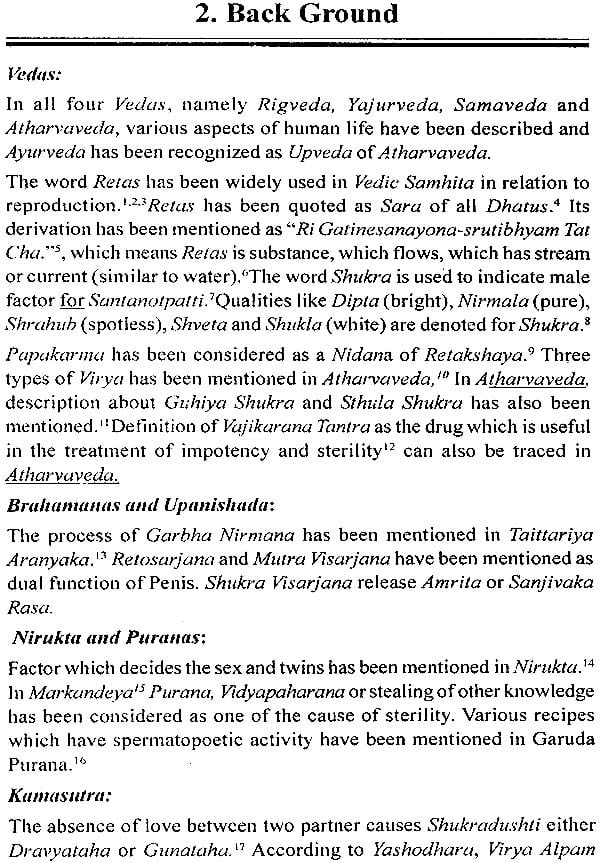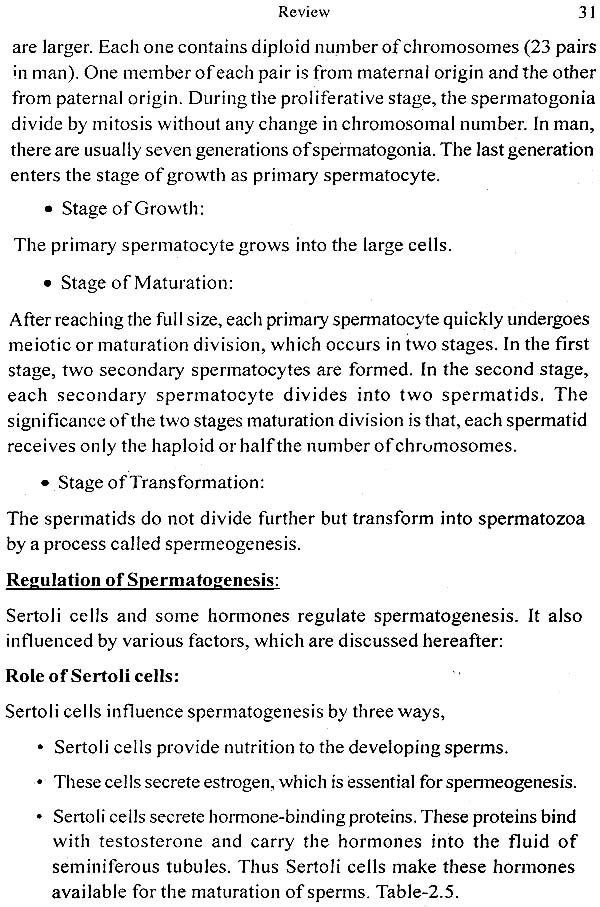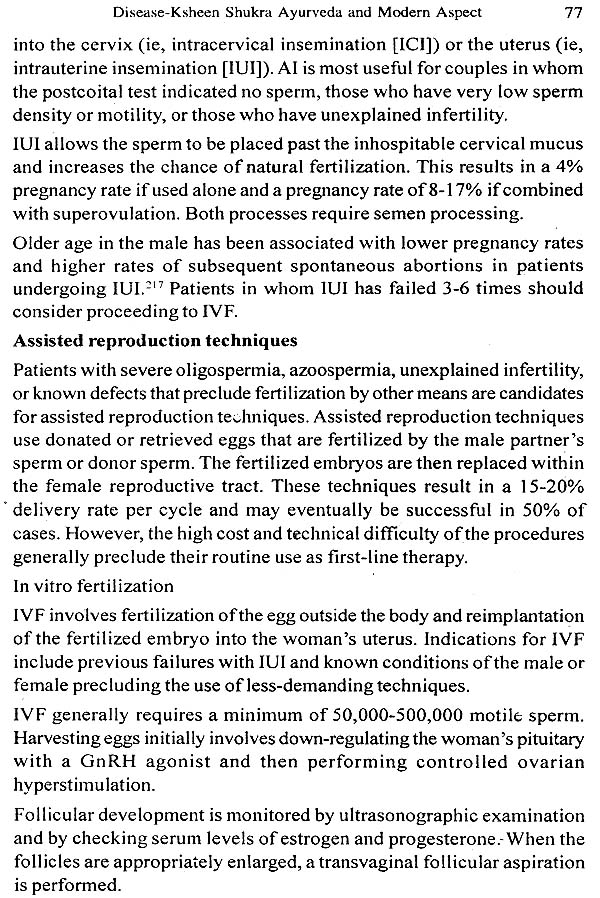
Sukra-Ultimate Dhatu & Kheena Sukra Ayurveda Approach
Book Specification
| Item Code: | NAP600 |
| Author: | Dr. Jitendra Varsakiya and Dr. Divyarani Kathad |
| Publisher: | Chaukhambha Prakashan |
| Language: | English |
| Edition: | 2018 |
| ISBN: | 9789386735591 |
| Pages: | 110 |
| Cover: | Paperback |
| Other Details | 8.5 inch X 5.5 inch |
| Weight | 120 gm |
Book Description
Male reproductive failure leading to infertility is a significant problem affecting more than 80 million couples worldwide'. As couples are increasingly delaying parenthood, their advancing age, combined with environmental issues, daily stress, drugs, and genetics, independently affect the entire spectrum of male fertility as assessed by reduced sperm quality and fertilization capacity (both assisted and unassisted). Moreover, epidemiological data suggest that these issues can also lead to higher rates of adverse birth outcomes and congenital anomalies and repeated assisted reproductive failures, especially when the semen parameters are normal. Standard semen analysis (S/A) fails to detect any abnormality, especially in cases of idiopathic infertility'. In spite of this, semen analysis has an important role in the routine diagnosis of male infertility and reproductive failure3.Previously it was the females, who bore the blame and burden for being barren and the social stigma attached there to. Thanks, to the medical statistics that have held the males equally responsible in at least approximately 20% of cases of infertility are entirely due to a male factor, with an additional 30% to 40% of cases involving both male and female factors. Therefore, a male factor is present in one half of infertile couples.
Some of the known responsible factor for male infertility are poor semen quality, endocrine inter relationship, testicular function and genetical factors etc.' among these, oligozoospermia contributes as one of the major factor of infertility. As per WHO oligozoospermia is condition where sperm count is below 15 million/ml.
Infertility can complicate the most intimate relationships. It brings many strains - on time, finances, ability to make decisions and even the job. Although, both the partners experience it at the same time, each one is likely to have different feelings, often widely divergent ones, about one's impaired fertility. Misunderstandings often occur, and one or both may begin to feel isolated and alone. Despite great advances made by medical science in understand in each stage of the reproductive process, the problems that occur at each step and planning their management, some arenas post a lacunae, due to which infertility is still a catastrophe. One such arena is the role of low sperm count in male infertility and its management.
Oligozoospermia can be the result of many factors, some are permanent and some are reversible. Causes of Oligozoospermia include an obstruction of the normal flow of sperm due to such conditions as testicular trauma and vasectomy, from infection and sexually transmitted diseases. Other causes are reduced synthesis of testosterone or defective release of FSH and LH from pituitary. Ayurveda very long back had realised the factors governing fertility and their defects that give rise to Vandhyatva and Klaibya. Eight Reto dosas are mentioned among which, the concept of Ksheena Shukra holds good to the present day's Oligozoospermia.
Current treatment of oligozoospermia is hormone therapy and surgical approaches. However, attempts are made to specifically identify causes of male infertility such as immunological, infectious or hormonal factors in order to prescribe a specific treatment. But, in many cases no specific cause can be found and empirical treatments are still used. Various modern therapeutic measures and associated reproductive technologies like artificial insemination, test tube baby etc. are very expensive and common men cannot afford for it. Further results are not very encouraging. Hence, there is a search for alternative treatment modalities in other system of medicine, which is safe and cost effective.
Oligozoospermia stands near to the term Ksheena Shukra which is among eight types of Shukradushti mentioned in the classics and is a Vata Pittaja Vyadhi7 being more prevalence in Madhyama Vaya, a disease from Apana Vata province, which incapacitates man from conceiving his life partner, ending in infertility. In Ayurvedic texts, the treatment of Kshina Shukra has been highlighted as Upachaya of Shukra Dhatu.8 It can be done with the drugs having Shukra Vardhaka drugs like Shukrala, Vrishya etc.
Vajikarana (Aphrodisiac therapy) a branch of Ayurveda deals with the promotion of sexual health, healthy progeny, treatment of male sexual disorders (erectile dysfunction, premature ejaculation) and infertility. Vajikarana therapy improves the nourishment and function of the reproductive organs and vitalizes tissues of reproductive organs, increasing semen count and strengthening their motility and making sperms more viable for conception. Vajikarana helps to increase fertility of both sexes, thereby leading to the propagation of healthy future generations.
Further Samshodhana is one of the important therapies of Ayurveda which deals mainly with elimination of the aggravated Doshas from the body. These Doshas (toxins and waste material) should be eliminated from natural as well as the nearest root of the body.
Contents
| 1 | Introduction | 1-4 |
| 2 | Back ground | 5-12 |
| 3 | Review | 13-38 |
| Features of shukra | ||
| Consistency of semen | ||
| Physiological considerations | ||
| Madren & ayurved | ||
| 4 | Disease -ksheena shukra ayurveda& | 39-94 |
| Modern aspect | ||
| 5 | Bibliography | 95-106 |
Sample Pages









